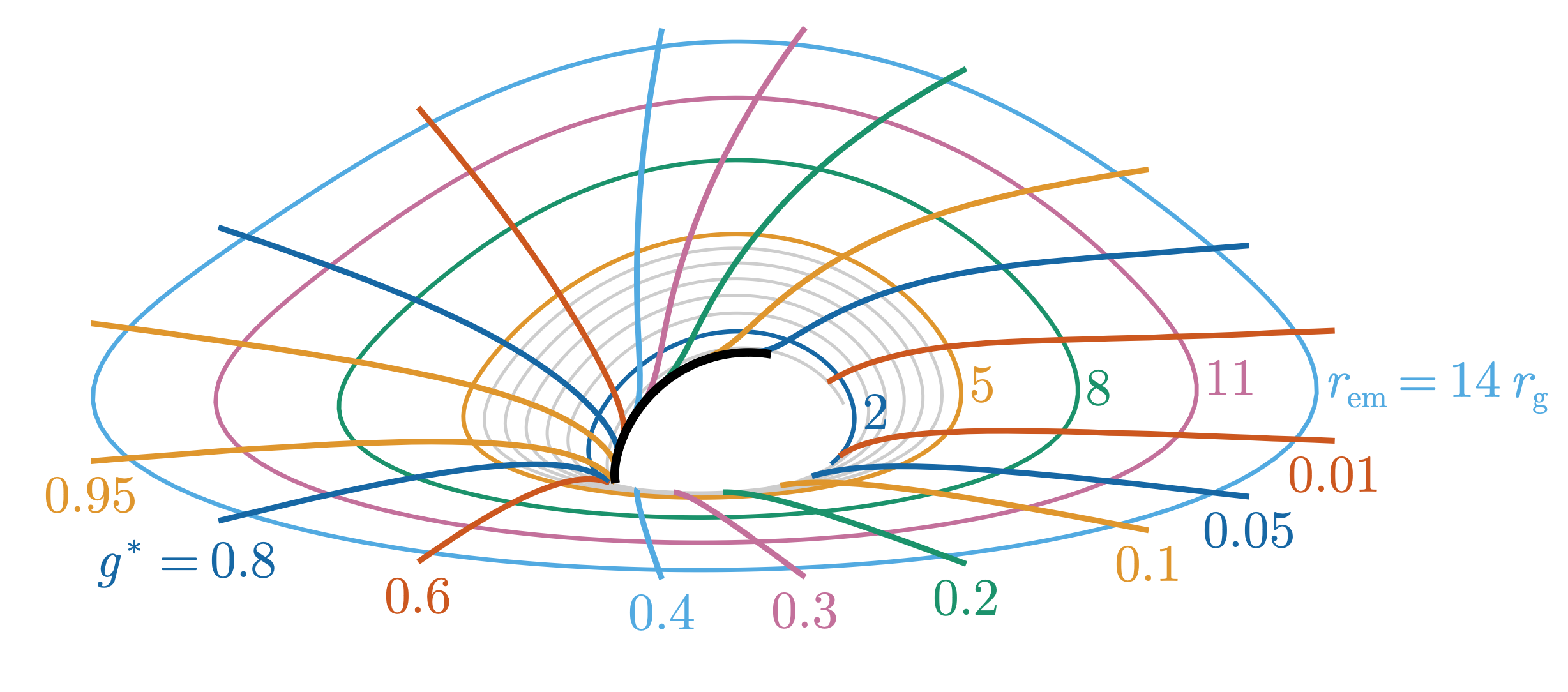Science Work packages
There are four key Science Work Packages (WPs) described below.
WP1: Innermost accretion flow
Lead: Dr Andy Young, University of Bristol.
The Innermost Accretion Flow is an extreme environment where relativistic effects are the strongest, and the interplay between inflowing matter, the corona, disk, and outflows defines how the black hole grows and affects its surroundings. WP1 addresses the key questions: What is the structure and dynamics of matter close to the supermassive black hole and how are they related to the fundamental physical properties of the system (e.g. mass, spin, accretion rate)? What is the interplay between the different spatial components?

WP2: Accretion disk
Lead: Dr Dragana Illic, Faculty of Mathematics, University of Belgrade.
The Accretion disk in AGNs is a multi-temperature/multi-phase structure that funnels material from large scales, through the innermost flow, onto the black hole. WP2 addresses the following key questions: Which insights can variability offer on the structure and physical conditions of accretion disks? What is its distance and causal relation to other emitting structures, e.g. broad-line region? How does the disk variability relate to the fundamental properties of the system (black hole mass, spin, accretion rate)? Can we use our understanding of the optical/UV variability of type I and type II AGNs to test the Unification hypothesis or identify variability outliers and peculiar signals (e.g. extreme variability events or periodic oscillations) that expand the parameter space of accretion flow studies? The special focus of WP2 is to obtain a comprehensive characterisation of AGN lightcurves using current and upcoming data-avalanche missions (e.g. VST, GAIA, CRTS, ZTF, and ultimately the Vera Rubin’s Legacy Survey of Space & Time - LSST) through high cadence monitoring over decadal timescales in half the sky, as well as the development of the state-of-the-art machine learning algorithms and novel phenomenological models of multi-phase accretion flows.
WP3: Outflows and feedback
Lead: Dr. Elisa Costantini, SRON Netherlands Institute for Space Research.
AGN winds ionised by the accretion disk and X-ray corona, may carry and deposit sufficient energy and metals to the interstellar medium, thereby affecting the evolution of galaxies. However, the observational evidence and associated modelling are not yet conclusive. Key Questions include (i) how and where do winds launch as a result of the accretion process, (ii) what are the physical conditions of the outflowing material and (iii) does AGN feedback impact the interstellar medium of the host galaxy? Science Work Package 3 will develop Artificial Intelligence emulators of outflow physical models to constrain the physical properties and launching site of AGN winds using archival data from state-of-the-art X-ray facilities (XMM, NuSTAR, Chandra, XRISM). These results will provide a solid basis for comparison to multiwavelength observations of galaxy-scale winds (ALMA, HST, JWST) and the latest numerical simulations of AGN feedback and galaxy evolution.
WP4: New discovery space (transversal)
Lead: Dr. Arne Rau, Max Planck Institute for extraterrestrial Physics.
The disruptions of stars in the tidal fields of supermassive black holes provide information on the physics of the innermost accretion flow, the formation of accretion disks and the launch mechanisms of outflows in real-time and in a manner that is complementary to studies of Active Galactic Nuclei. In WP4, we will explore the populations of Tidal Disruption Events (TDEs) and Quasi-Periodic Eruptions (QPEs) discovered by the Einstein Probe X-ray satellite and the Vera Rubin observatory. Through the development of classifiers using innovative machine-learning-based algorithms, systematically selected samples of high-confidence X-ray/optical TDEs will be compiled. Using multi-wavelength characterisation and modelling of selected events, we will study the physics of accretion disks and outflows, search for signatures of relativistic effects and constrain the properties of the disrupting supermassive black holes and their nuclear stellar populations.